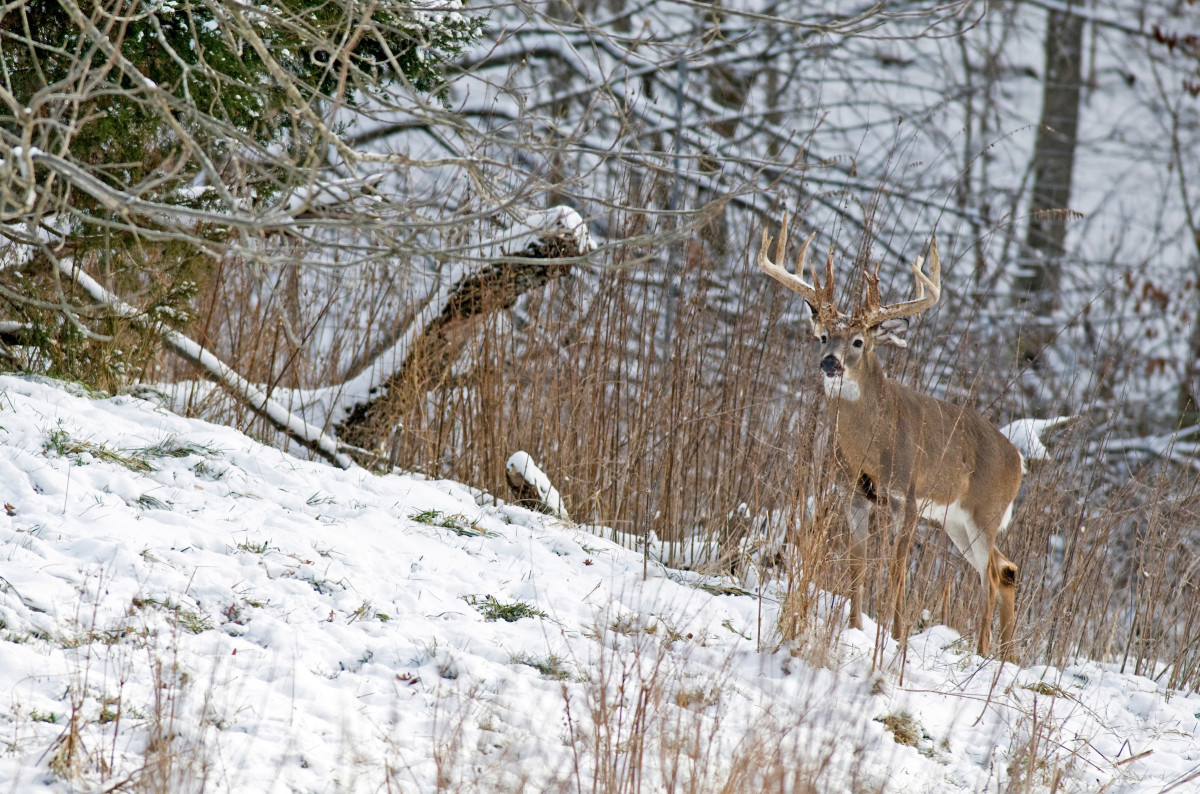
It’s not uncommon for deer hunters to hang up their bows or guns after the rut and spend late season in their living rooms. And, to a degree, I can understand. After several months of hunting season, it’s only human to be a little worn down. However, these folks are missing out.
The late season can be just as productive as the famed month of November if you play your cards right. But knowing the right move to make is easier said than done, especially if you’re new to the deer hunting world. With this being the case, we’ve put together a high level “playbook” for the last portion of deer season. If you keep these pointers in mind and stay positive, you’ve got a great chance of ending your season with a bang.
Find the Food
Nothing is more important to a deer during the late season than food, especially a mature buck. After having just spent most of November relentlessly searching out and chasing down breeding partners, bucks are now in full recharge mode as they try to pack on weight before the worst of winter hits. We hunters can use this to our advantage as deer become locked into a consistent bed-to-feed patterns linked tightly to the most attractive food source in the area.
If you can identify the food source getting visited the most, you’ll have a great chance at filling your freezer. In December and beyond, highly palatable food sources across much of the country include corn, soybeans, brassicas, and cereal grains.
If you’re not sure what’s best in your specific area, take some time after a snow or rain to scout fields and other potential food sources, looking for tracks. If you’re after mature bucks, look for big, splayed-out tracks that are as wide as your four fingers held together. Other options to collecting this intel include hanging trail cameras in time-lapse mode over potential feeding areas, or sitting in an observation post and glassing from a distance.
Timing is Everything
The next challenge is determining the right time to hunt. Late season deer have been hunted for months on end by this point and their tolerance for additional human intrusion is almost zero. With this being the case, it’s important to be especially careful about when you hunt those deer. If a mature buck is your goal, your best bet is to bide your time and plan a few well-timed strikes, rather than hunting the same spot over and over, hoping he’ll blindly walk through. That kind of approach usually just leads to spooked deer.
The way to choose those right times to hunt is to pay attention to the weather. When it comes to weather, factors such as extreme cold fronts, heavy snow, and high barometric pressure all seem to trigger increased deer movement. If one of these events occurs, and the wind is right to hunt your area, it’s a good time to strike. Additionally, if a long-distance observation or trail camera photo indicates a buck you’re after is moving in daylight, it’s go-time as well.
It’s also worth pointing out that evening hunts are traditionally a better option than morning hunts in the late season. In many cases deer will be headed back to their beds or already in them before daylight, making it extremely difficult to sneak in for morning hunts without alarming deer. On the flip side, during evening hunts you can sneak in when deer are safely bedded and wait for them to come to you. There tends to be more daylight activity in the afternoons anyway, so these hunts are both more productive and lower risk. It’s important to remember that one well-timed hunt is usually more productive than a half dozen random sits.
Maintain Stealth
When you do get out for those well-timed hunts, now is the time to crank your stealth mode up to 11. When sneaking in to hunt, be especially careful of how you access and set up near your chosen food source. Does tend to bed as close to food sources as they can during the cold winter months, meaning that they sometimes can be found right on the edge.
If you don’t account for this and barge around spooking does away, you’re likely to see a cascading effect as those spooked deer alarm others that are bedded further back. The trick is to position your ambush location in a spot where you can intercept deer moving from their beds to the food source, but not go so far back as to alert everything to your presence.
Noises often seem to be more present and carry further in the cold weather of the late season, like tree stands creaking and boots crunching. Take your time and be careful to avoid these pitfalls as much as possible.
Finally, when you’re leaving your stand after an evening hunt, go the extra mile to avoid spooking deer off the food source you’re hunting. If you have a sneaky exit route that takes you away from the deer, this is ideal. If you’re hunting right on the food and can’t get out without alarming feeding animals, try to convince a friend or family member to drive a truck or ATV in your direction, or even pick you up so that the vehicle spooks the deer and not a human being. Deer seem much more forgiving of a vehicle passing through than a hunter on foot. If this isn’t an option, I’ve also found howling like a coyote to be a somewhat effective way of clearing a food source without visually giving yourself away.
Feature image by John Hafner




